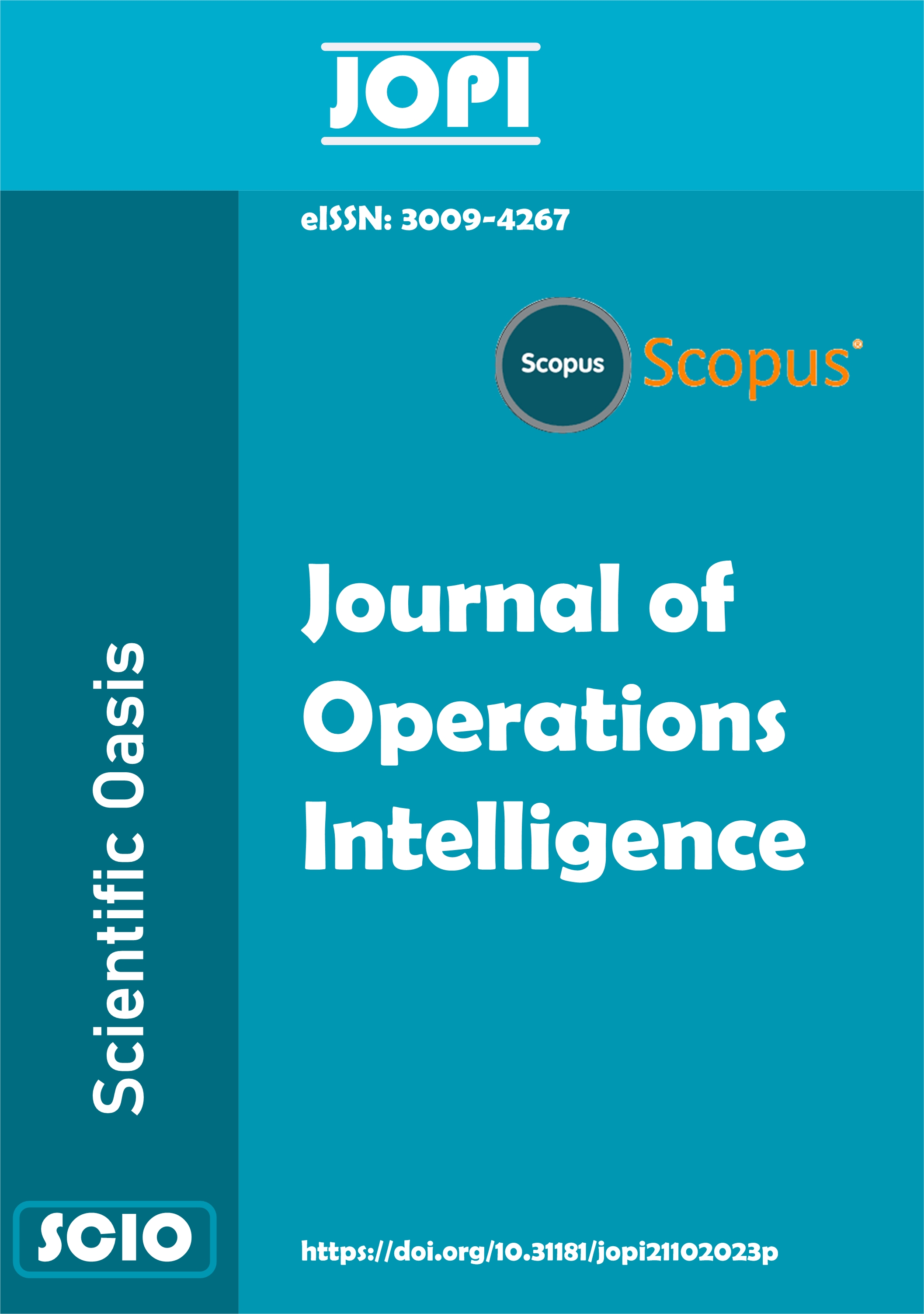Smart-Watches Assisted Sugar Level Monitoring with Different Activities and Nutrition based on Machine Learning Approaches
DOI:
https://doi.org/10.31181/jopi21202419Keywords:
CGM, Glucose, Diabetes, Sugar, Machine Learning, Activities and NutritionAbstract
These days, sugar glucose monitoring is very important for both diabetic and non-diabetic patients while they are eating and engaging in different activities. There are different ways to monitor body glucose levels, such as blood-based glucose monitoring and smartwatch-based glucose monitoring. However, continuous glucose monitoring (CGM) is an emerging non-invasive method for various subjects (e.g., patients and consumers). Although smartwatches have limitations, in this paper, we present a new smartwatch framework that monitors the body's glucose level with new features such as nutrition and activities. We present a modified dataset with an additional feature: sugar glucose level during different activities (e.g., running, sitting, sleeping, and walking) while consuming different nutrition at different time intervals. We also present an empirical machine learning approach called the activity glucose monitoring algorithm (ASA), which processes all datasets with more optimal results. Simulation results show that our proposed framework is more optimal, monitoring glucose with different activities and more features compared to existing smartwatches, achieving an accuracy of 78%, which surpasses existing machine learning methods.
Downloads
References
Rehan, I., Ullah, R., & Khan, S. (2023). Non-invasive Characterization of Glycosuria and Identification of Biomarkers in Diabetic Urine Using Fluorescence Spectroscopy and Machine Learning Algorithm. Journal of Fluorescence, 1-9. https://doi.org/10.1007/s10895-023-03366-1
Srivastava, S. K., Bhaiyya, M., Dudala, S., Hota, C., & Goel, S. (2023). A machine learning approach for electrochemiluminescence-based point of care testing device to detect multiple biomarkers. Sensors and Actuators A: Physical, 350, 114135. https://doi.org/10.1016/j.sna.2022.114135
Annuzzi, G., Apicella, A., Arpaia, P., Bozzetto, L., Criscuolo, S., De Benedetto, E., ... & Vallefuoco, E. (2023). Impact of nutritional factors in blood glucose prediction in type 1 diabetes through machine learning. IEEE Access, 11, 17104-17115. https://doi.org/10.1109/ACCESS.2023.3244712
Pina, A. F., Meneses, M. J., Sousa‐Lima, I., Henriques, R., Raposo, J. F., & Macedo, M. P. (2023). Big data and machine learning to tackle diabetes management. European Journal of Clinical Investigation, 53(1), e13890. https://doi.org/10.1111/eci.13890
Mansoori, A., Sahranavard, T., Hosseini, Z. S., Soflaei, S. S., Emrani, N., Nazar, E., ... & Mobarhan, M. G. (2023). Prediction of type 2 diabetes mellitus using hematological factors based on machine learning approaches: a cohort study analysis. Scientific Reports, 13(1), 663. https://doi.org/10.1038/s41598-022-27340-2
Agliata, A., Giordano, D., Bardozzo, F., Bottiglieri, S., Facchiano, A., & Tagliaferri, R. (2023). Machine Learning as a Support for the Diagnosis of Type 2 Diabetes. International Journal of Molecular Sciences, 24(7), 6775. https://doi.org/10.3390/ijms24076775
Saberi‐Karimian, M., Mansoori, A., Bajgiran, M. M., Hosseini, Z. S., Kiyoumarsioskouei, A., Rad, E. S., ... & Ghayour‐Mobarhan, M. (2023). Data mining approaches for type 2 diabetes mellitus prediction using anthropometric measurements. Journal of Clinical Laboratory Analysis, 37(1), e24798. https://doi.org/10.1002/jcla.24798
Oikonomou, E. K., & Khera, R. (2023). Machine learning in precision diabetes care and cardiovascular risk prediction. Cardiovascular Diabetology, 22(1), 259. https://doi.org/10.1186/s12933-023-01985-3
Uddin, M. A., Islam, M. M., Talukder, M. A., Hossain, M. A. A., Akhter, A., Aryal, S., & Muntaha, M. (2023). Machine Learning Based Diabetes Detection Model for False Negative Reduction. Biomedical Materials & Devices, 1-17. https://doi.org/10.1007/s44174-023-00104-w
Joshua, S. R., Shin, S., Lee, J. H., & Kim, S. K. (2023). Health to Eat: A Smart Plate with Food Recognition, Classification, and Weight Measurement for Type-2 Diabetic Mellitus Patients’ Nutrition Control. Sensors, 23(3), 1656. https://doi.org/10.3390/s23031656
Voruganti, V. S. (2023). Precision Nutrition: Recent advances in obesity. Physiology, 38(1), 42-50. https://doi.org/10.1152/physiol.00014.2022
Shahakar, S., Chopde, P., Purohit, N., Vishwakarma, A., Nite, A., & Sharma, A. K. (2023, March). A Novel Machine Learning and Deep Learning Driven Prediction for Pre-diabetic Patients. In 2023 6th International Conference on Information Systems and Computer Networks (ISCON) (pp. 1-6). IEEE.
Lone, I. M., Midlej, K., Nun, N. B., & Iraqi, F. A. (2023). Intestinal cancer development in response to oral infection with high-fat diet-induced Type 2 diabetes (T2D) in collaborative cross mice under different host genetic background effects. Mammalian Genome, 34(1), 56-75. https://doi.org/10.1007/s00335-023-09979-y
Thotad, P. N., Bharamagoudar, G. R., & Anami, B. S. (2023). Diabetic foot ulcer detection using deep learning approaches. Sensors International, 4, 100210. https://doi.org/10.1016/j.sintl.2022.100210
Li, H. Y., Dong, L., Zhou, W. D., Wu, H. T., Zhang, R. H., Li, Y. T., ... & Wei, W. B. (2023). Development and validation of medical record-based logistic regression and machine learning models to diagnose diabetic retinopathy. Graefe's Archive for Clinical and Experimental Ophthalmology, 261(3), 681-689. https://doi.org/10.1007/s00417-022-05854-9
Yang, J., Gong, X., Chen, S., Zheng, Y., Peng, L., Liu, B., ... & Jiang, L. (2023). Development of Smartphone-Controlled and Microneedle-Based Wearable Continuous Glucose Monitoring System for Home-Care Diabetes Management. ACS sensors, 8(3), 1241-1251. https://doi.org/10.1021/acssensors.2c02635
Umami, H., Faroka, G., Isnahardiyanti, F., Muhlis, N., & An-Naafi, R. A. (2023). GLUSENT (Glucose Assistant): Sugar Monitoring System Smart Watch Based on Bioelectronics and Internet of Things to Prevent Diabetes Mellitus in The 5.0 Society Era. Asian Journal of Natural Sciences, 2(1), 25-34. https://doi.org/10.55927/ajns.v2i1.3266
Weiner, M., Adeoye, P., Boeh, M. J., Bodke, K., Broughton, J., Butler, A. R., ... & Clark, D. O. (2023). Continuous Glucose Monitoring and Other Wearable Devices to Assess Hypoglycemia among Older Adult Outpatients with Diabetes Mellitus. Applied Clinical Informatics, 14(01), 037-044. https://doi.org/10.1055/a-1975-4136
Chmayssem, A., Nadolska, M., Tubbs, E., Sadowska, K., Vadgma, P., Shitanda, I., ... & Zebda, A. (2023). Insight into continuous glucose monitoring: from medical basics to commercialized devices. Microchimica Acta, 190(5), 177. https://doi.org/10.1007/s00604-023-05743-w
Premalatha, P., Poonguzhali, E., & Rekha, R. (2023, January). IoT Based on Non-invasive Glucometer. In International Conference on Smart Computing and Communication (pp. 497-505). Singapore: Springer Nature Singapore. https://doi.org/10.1007/978-981-99-0838-7_43
Downloads
Published
Issue
Section
License
Copyright (c) 2024 Sajida Memon (Author)

This work is licensed under a Creative Commons Attribution 4.0 International License.





















